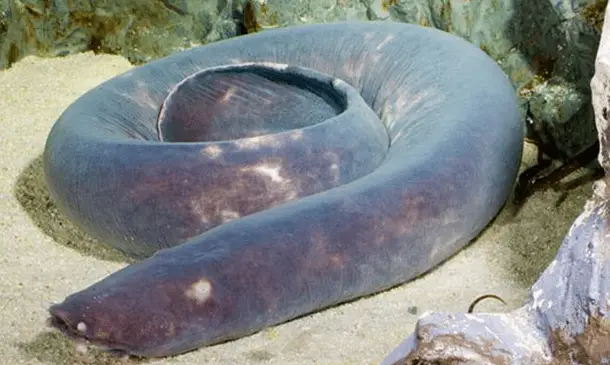Phylogeny of Cyclostomata: The Agnatha are the primitive members of Vertebrate and their mouths do not have jaw, this is the main feature of group Agnatha. Under Group Agnatha, two classes are present, class Ostracodermi and class Cyclostomata, Ostracoderms are extinct now but Cyclostomata presents today in the form of Lamprey and Hagfish.
So Cyclostomata is the example of primitive living Vertebrate, for this reason, they are very important in the perspective of evolution. The Cyclostomata are advanced in many aspects as compared to Ostracoderms, in Cyclostomata some features are very specialised which makes them advanced over Ostracoderms and other Subphylum of phylum Vertebrate.

Some workers believe that Cyclostomata has evolved from Ostracoderms, the bony exoskeleton present in Ostracoderms was due to the presence of their enemy arthropods. But when the predator Arthropods become extinct, the need for external bony armour becomes useless and with time the external bony armour disappears and then the armour fewer Ostracoderms evolve into Cyclostomata.
The paired appendages, bony armour in Ostracoderms disappear in Cyclostomata and the suctorial mouth appear in Cyclostomata and the endoskeleton in Cyclostomata is all made of cartilage.
The features present in Cyclostomata are mostly advanced features as that of Cephaochordata and they have some degenerate features which make them lower than Gnathostomata. In Cyclostomata, many advanced features present in their Ammocoet larval stage remain absent in the adult stage.
Now we will focus on those factors and similarities, which makes the workers confident about the Ostracoderm ancestry of Cyclostomata. Some members of Ostracoderms show very much similarity with the Cyclostomata which indicates that the Ostracoderm evolved into Cyclostomata during the process of evolution —-
- The single median external nostrils, fin like appendages, the heterocercal caudal fin are present in Cephalaspides.
- The group pteraspids have paired nostril, the caudal fin is hypocercal, paired appendages absent.
- From the above features most of the workers assume that, the two branches of Cyclostomata Lamprey and Hagfish are derivatives of two separate ancestral stock.
- Lamprey show great similarity with the cephalaspids so we can say that Lamprey derived from the cephalaspids stock.
- On another side, Hagfish and slime eels shows great resemblance with the pteraspids so we can say that Hagfish and slime eels evolved from the pteraspids.
- So we can say that all the Cyclostomata are not derivatives of a single group of ancestors, the Petromyzontiformes and Myxiniformes are different order of class Cyclostomata and both are separate phylogenetically.
Most of the workers believe that Cyclostomata is more primitive than the classes under Group Gnathostomata, but some workers do not believe this concept due to the presence of some peculiar features in Cyclostomata. Some workers believe that Cyclostomata and Gnathostomata have a very close relationship and the Cyclostomata are more advanced than Gnathostomata.

Some workers find some advanced peculiar features in some primitive Cyclostomata which are not present in Gnathostomata, this finding lead some workers to think that the Gnathostomata are more primitive than Cyclostomata.
Conclusion on Phylogeny of Cyclostomata:
The link of Cyclostomata with other groups of animals is complicated so it is difficult to draw the evolutionary line on which Cyclostomata is present. Even Ostracoderms have a clear link with Gnathostomata so can say that Gnathostomata is in the line of Ostracoderm ancestry but the intermediate between Ostracoderms and Gnathostomata is not clear yet. It is very difficult to place the Cyclostomata on the line of evolution and for this reason, Cyclostomata is now on a deadline of evolution.

Reference Cyclostomata General Characteristics Features Classifications Systematic Position Affinities
Detailed Study On
Classification of Cyclostomata
Characteristics Features of Cyclostomata
Economic Importance of Petromyzon
Nervous System and Excretory System of Petromyzon
Respiratory System and Circulatory System of Petromyzon
Digestive System and Feeding Mechanism of Petromyzon
Anatomy of Petromyzon (Lamprey)
Hi Everyone!!! Welcome to Imaluop. Imaluop always try to learn some new and he want to share to other people. Here we will try to learn various topics on Science, specially on Biological Sciences.